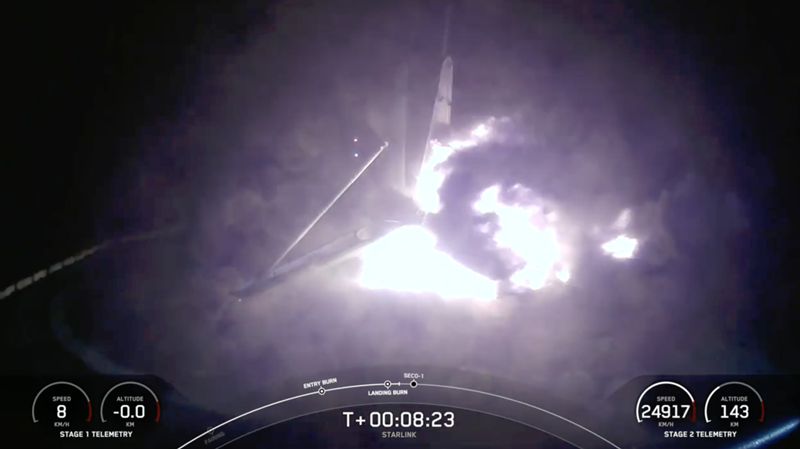The fastest-growing investigation into a rocket accident in history concluded yesterday. It took one day to review the application and issue permission to resume flights. Strictly speaking, the investigation is still ongoing, but the regulator made SpaceX promise to strictly adhere to all previously issued licensing rules. For this, the company was allowed to resume launches of Falcon 9 launch vehicles.

Image source: SpaceX
The unfortunate accident occurred on the morning of August 28 after the successful launch of a payload in the form of the next batch of satellites for the Starlink network into target orbits. The first stage of the rocket, for which the “emergency” flight was already 23 in its flight career, could not stand on the landing platform of an unmanned barge and capsized. The very fact of making 23 flights after 22 cycles of successful recovery can already be considered an “anomaly,” although it is fair to call it a miracle. But for FAA (Federal Aviation Administration) officials, the failure served as a signal to suspend flights of Falcon 9 rockets.
On August 29, SpaceX submitted an application to the regulator for permission to resume rocket flights. In anticipation of the historic Polaris Dawn mission to the Earth’s poles and in preparation for the Dragon Crew-9 mission to rescue the crew of the Boeing Starliner stuck on the ISS, banning the Falcons from flying is a kind of act of sabotage. It seems that the FAA understood this, and on August 30, the regulator allowed the Falcon 9 rocket launches to resume. This does not mean that the issue with the accident is closed. The data will be collected, analyzed and presented to officials in the form of a report. It remains a mystery why there was this demarche with a ban on flying for a whole day?